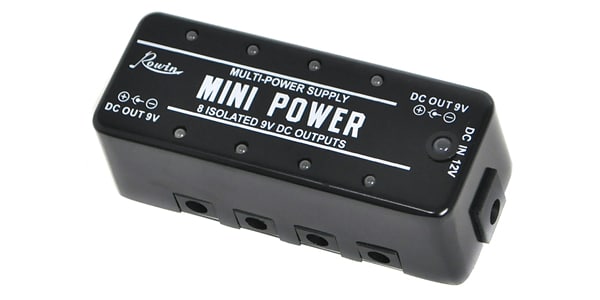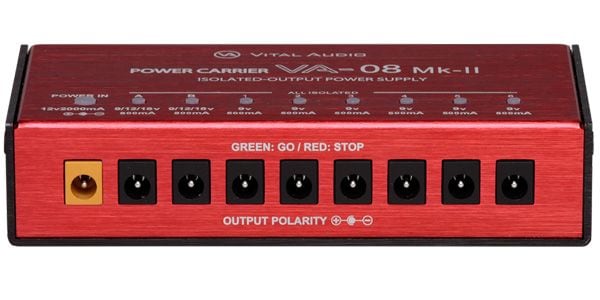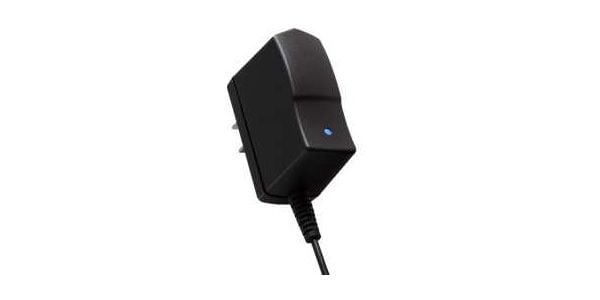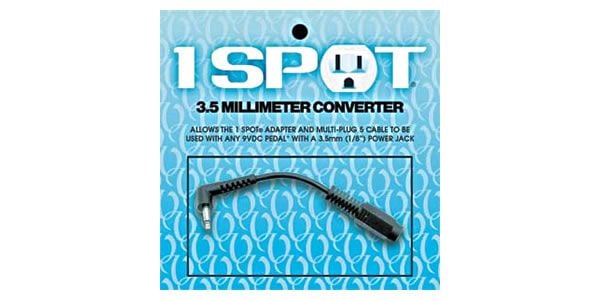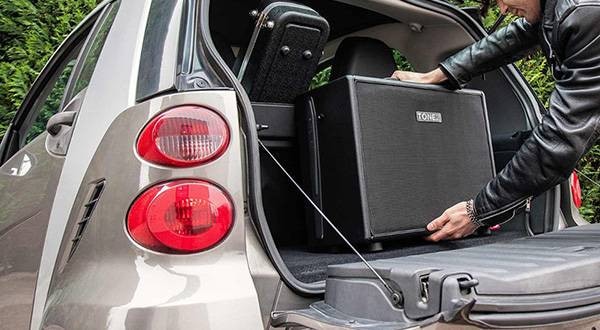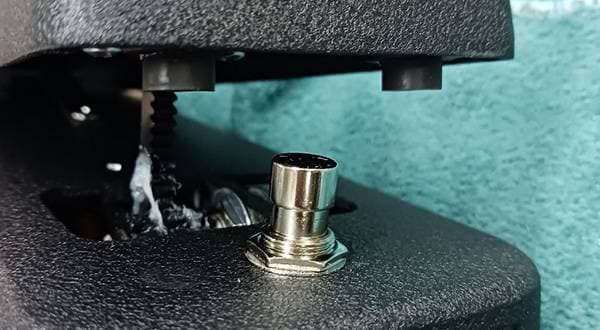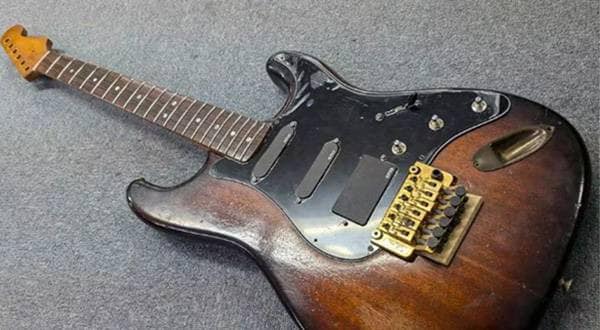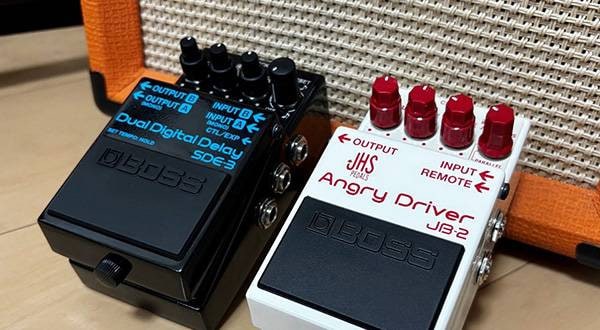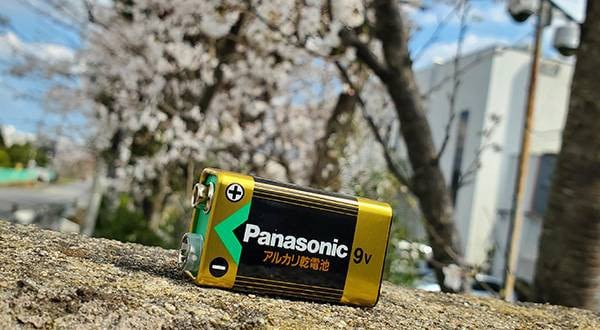Effects pedals are powered by batteries or a power adapter, but many compact effects pedals do not come with an adapter. And, there are many different types of power adapters. Never try to use a power adapter you found lying around the house! Don't ever do that. There have been cases where effects pedals have started smoking when a game console adapter was plugged into it. If you make such a mistake, the worst that can happen is that getting it repaired will end up costing more than buying a new one. To avoid such a mistake, I would like to briefly explain the differences and types of adapters.
[For Beginners] The Jewel Found Underfoot: A Slightly Nerdy Lecture on Effects Pedals
Part 1 Overdrive
Part 2 Distortion
Part 3 Wah Pedal
Part 4 Phaser
Part 5 Patch cable
Part 6 Power Adapter
1. Type
There are two types of power adapters: alternating current (AC) and direct current (DC). For the power supply specifications of your equipment, check the instruction manual or the mark on the main unit. In the case of direct current (DC), the mark is as shown below.
*There is no +/- polarity for alternating current (AC).

2. Electric Current
Check the current (A, mA) of your model. As a general rule, choose an adapter with a current greater than what’s required by the device. For example, if the device is labeled 800mA (0.8A), use a 1000mA (1A) adapter; if it is labeled 1500mA (1.5A), use a 2000mA (2A) adapter, and so on. Some may say this is a mistake, but basically the amperage is only used by the effects pedals for what it needs, so there is no problem with too much. If the amperage on the adapter is low, it will not be able to send enough current to the effects pedal, resulting in symptoms such as unstable or inability to turn on the power.
3. Inner Diameter of the Connector
Look at the power adapter connection on your equipment. Most compact effects pedals have a 2.1mm diameter connector, but some with larger adapters may have a 2.5mm diameter connector. If you connect a 2.5mm-diameter adapter to a 2.1mm-diameter effects pedal, you will get poor contact, so you must choose the right size model. However, measuring this size is very difficult. As I mentioned above, it is best to remember that a typical compact effects pedal is 2.1mm.
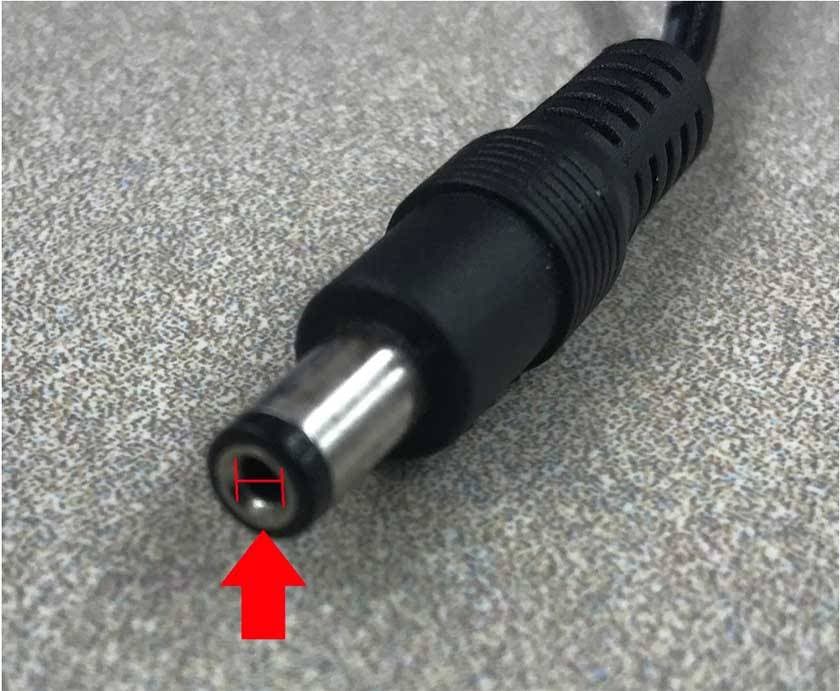
4. Polarity
Most effects pedals power supplies have polarity, with some having a positive center and others a negative center. If you make the mistake of using the wrong polarity or connecting an AC-AC adapter to a device that requires AC-DC conversion, be very careful, because it can burn parts and even damage the device.
5. Voltage
As a general rule, use an adapter with the voltage indicated on the label. If the voltage range is wide, you can use an adapter within that range as shown in the diagram below. It is said that increasing the voltage will increase the sound pressure.
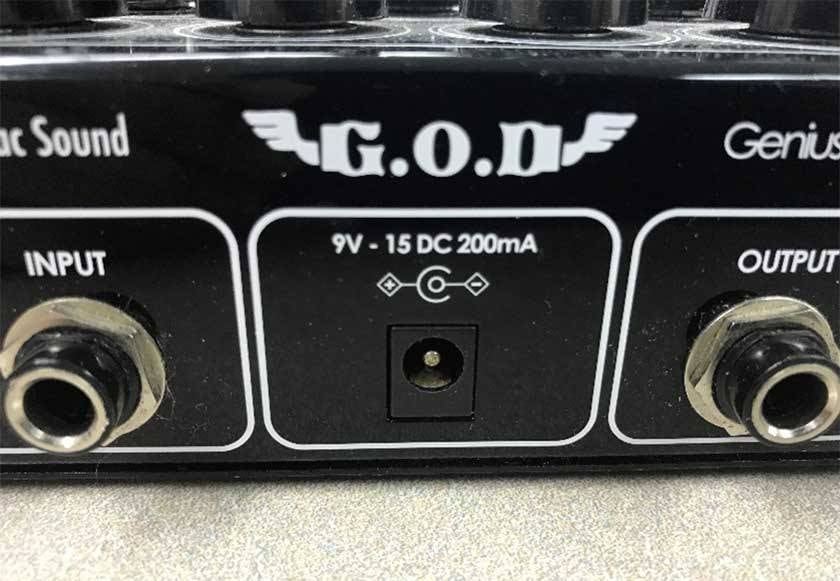
Here I will look at some patterns using some adapters I have found around me as examples.
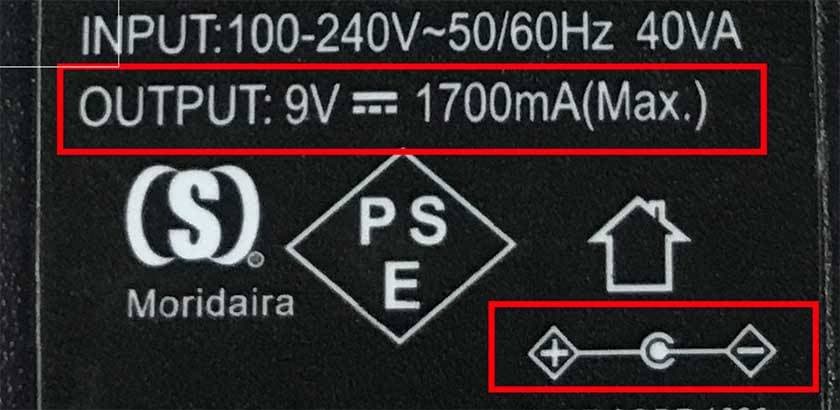
→This is an AC-DC adapter because of the polarity in the lower right corner. DC9V 1700mA (1.7A) center negative
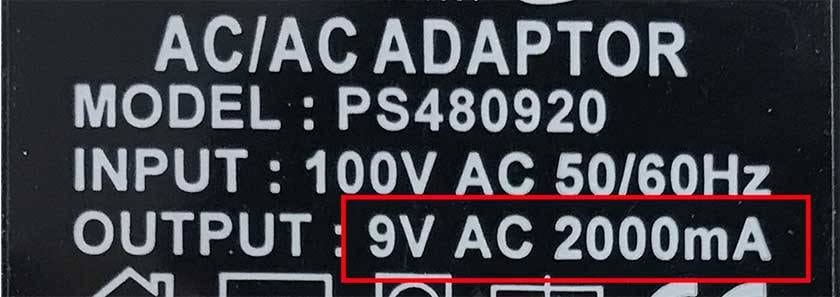
→This is an AC-DC adapter with the polarity marked on the bottom right. Furthermore, the output is also marked “AC”. Therefore, it is 9V AC 2000mA (2A).
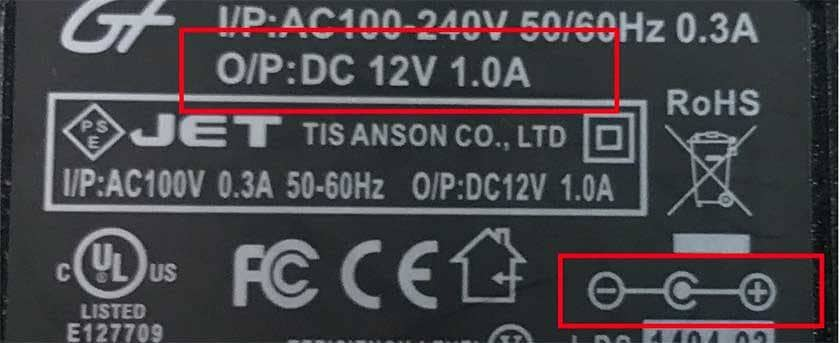
→If you look closely, you will see that the polarity mark is center positive, unlike the first model. DC12V 1.0A (1000mA) Center plus
Check the adapters around you like this.
It may seem difficult to understand, but 90% of effects pedals are almost the same,
DC9V center minus, inner diameter 2.1mm
The power adapter that guitarists refer to is a power supply adapter.
This is such a standard specification that guitarists often refer to it as the power adapter. Keep it in mind as if it were a magic spell!
6. Power Supply
If you have several effects pedals, it is difficult to connect adapters to all of them. Even if you use a table-top wiring system, you will have as many power adapters as the number of effects pedals you have. Just thinking about it, it seems like it would take up a lot of space. This is where a power supply comes in handy.
With one power supply, the only adapter that takes up space is for the supply. All you need to do is connect the power supply to the effects pedal with a DC cable.
*The actual power supply from one power supply can connect up to two effects pedals.
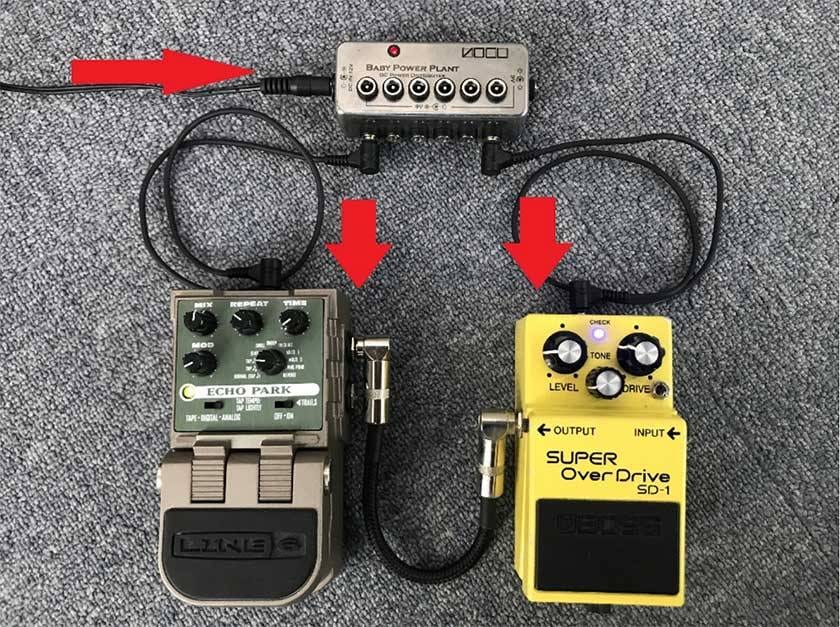
Although these power supplies are convenient, there is of course a limit to the number of units that can be connected. Check the number of outputs and amperage (A, mA) of the power supply according to the number of effects pedals you wish to add.
The number of OUTPUTS is the number of connections that can be made, so you can tell by looking at it. But for the number of amperes (A, mA), check the amount of current (A, mA) required by the effects pedal, as I explained in section 2.
As mentioned above, the power supply specifications for the effects pedals are,
DC9V, center minus, internal diameter 2.1mm.
is the basic power supply specification for effects pedals.
Some existing power supplies are capable of outputting other than DC9V, but the basic specification is DC9V center minus with internal diameter 2.1mm.
Although power supplies are convenient to have, be sure to check the power supply specifications of the effects pedals you already own before buying a new product.
→ Power Supplies
7. Summary
The following is a list of what I have explained so far. Please use it to check the compatibility of your effects pedals and adapters.
|
Effects Pedals |
Adapters |
|||
|
Voltage |
Compatible Voltage |
= |
Voltage Output |
|
|
Electric Current |
Electric Current Consumption |
≦ |
Maximum Current Output |
|
|
Polarity (DC only) |
Polarity |
= |
Polarity |
Alternating current (AC) ± doesn’t have polarity. |
|
Terminal |
Inner/outer Jack Diameters |
= |
Inner/Outer plugs |
■Standard Products
Standard adapter for many effects pedals that use square 9V batteries
・CLASSIC PRO / Power adapter DC9V 0.5A 2.1mm center negative
・BOSS / PSA-100 AC adapter
You can use the standard adapter for MXR, RAT, and Electro-Harmonix products from a long time ago in combination with the following adapters.
→ VISUAL SOUND / 1SPOT C35 MINI
(2019-09-10 release 2021-03-01 update)





